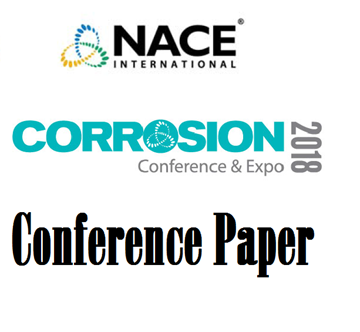Search
Products tagged with 'co2 corrosion'
View as
Sort by
Display
per page
02041 CORROSION RESISTANCE OF LOW Cr BEARING STEEL IN SWEET AND SOUR ENVIRONMENTS
Product Number:
51300-02041-SG
ISBN:
02041 2002 CP
Publication Date:
2002
$20.00
04376 A Review of the Effect of Organic Acids on CO2 Corrosion
Product Number:
51300-04376-SG
ISBN:
04376 2004 CP
Publication Date:
2004
$20.00
06112 FUNDAMENTAL ASPECTS OF CO2 METAL LOSS CORROSION – PART II: INFLUENCE OF DIFFERENT PARAMETERS ON CO2 CORROSION MECHANISMS
Product Number:
51300-06112-SG
ISBN:
06112 2006 CP
Publication Date:
2006
$20.00
09479 Erosion-Corrosion Failure of a Carbon Steel Pipe Elbow - A Case Study
Product Number:
51300-09479-SG
ISBN:
09479 2009 CP
Publication Date:
2009
$20.00
10368 A Systematic Approach Toward Selection of Cost-Effective and Corrosion Resistant Materials and Corrosion Inhibition and Protection Methods by Using Corrosion Prediction Models
Product Number:
51300-10368-SG
ISBN:
10368 2010 CP
Publication Date:
2010
$20.00
51316-7274-Inhibition Mechanisms for CO2 Corrosion Mitigation by Amines at the Top-of-the-Line
Product Number:
51316-7274-SG
ISBN:
7274 2016 CP
Publication Date:
2016
$20.00
51316-7275-Top of Line Corrosion Testing for a Gas Field with Acetic Acid and Low CO2
Product Number:
51316-7275-SG
ISBN:
7275 2016 CP
Publication Date:
2016
$20.00
51318-10522-Role of Microstructure in the Susceptibility of X42 ERW Linepipe to CO2 Preferential Weld Corrosion
Product Number:
51318-10522-SG
Publication Date:
2018
$20.00
51318-10805-Understanding Film Persistency using Adsorption and Desorption Studies
Product Number:
51318-10805-SG
Publication Date:
2018
$20.00
51318-10835- Effects of silty sand on localized corrosion behavior of 3Cr steel in CO2-O2 aqueous environments
Product Number:
51318-10835-SG
Publication Date:
2018
$20.00
51318-10903-Evaluation of corrosion inhibitor with high speed rotating cage
Product Number:
51318-10903-SG
Publication Date:
2018
$20.00
51318-10984-INFLUENTIAL FACTORS RELATED TO LOCALIZED CORROSION OF MILD STEEL IN SLIGHTLY SOUR ENVIRONMENTS
Product Number:
51318-10984-SG
Publication Date:
2018
$20.00












